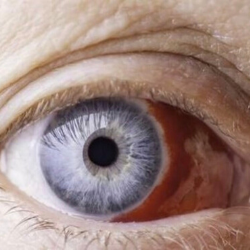 As people and businesses across Australia and New Zealand feel the impact of the COVID-19 pandemic, it has never been more important to look after our health and wellbeing. Taking the necessary protective measures is crucial in the current climate and in all areas where our health and safety can be compromised. Let’s rise to today’s challenge, and ensure we keep our vision in our sights, too.
As people and businesses across Australia and New Zealand feel the impact of the COVID-19 pandemic, it has never been more important to look after our health and wellbeing. Taking the necessary protective measures is crucial in the current climate and in all areas where our health and safety can be compromised. Let’s rise to today’s challenge, and ensure we keep our vision in our sights, too.
Surveys have revealed that our vision is the most valued of all of our senses. The World Health Organization (WHO) has estimated that more than 19 million people suffer blindness in one eye from injury. With an eye injury in the workplace comes high costs, not only for workers but also their families, their employers and the community. An eye injury can result in outcomes ranging from lost days at work to permanent loss of vision, as well as reduced productivity and medical and workers compensation costs. Many occupations are at risk of an eye injury. Mining, manufacturing, construction, agriculture, forestry and fishing are some of the industries where workers most commonly sustain an eye injury at work.
Consequences of eye injuries
With poor vision also comes an increased risk of injury. Uncorrected or untreated vision loss can result in a significantly increased risk of occupational injury. With more than 50,000 eye injuries occurring each year in Australia (and occupational injuries costing more than $60.6 billion in 2008–2009) it’s important to ensure that not only are your eyes protected but also that you maintain your vision with regular eye examinations and prescription eye protection, when necessary.
Injuries and foreign bodies around the front surface of the eye, known as the cornea, can lead to irritation, infection and scarring. After an open globe injury in which the eyeball ruptures or is penetrated, poor visual outcomes have resulted with patients reporting more difficulty in reading, doing their favourite hobby or working in their usual job, with 40% unable to return to their previous job.
Understanding when eye injuries happen and why
An eye injury at work is more likely to happen to males, with young and inexperienced males being at higher risk. People who have had a previous eye injury, or eye operation, are at higher risk of a further eye injury and should take special care ensuring eye protection is always worn when exposed to hazards.
Particles travelling at high speed generated from mechanical equipment, chemical splashes and spills, as well as radiation sources, are common sources of eye hazards. Activities often associated with eye injuries include lawn mowing, farm fencing, hammering, chainsawing, tree pruning and grinding.
Chemicals frequently involved in eye injuries include sodium hydroxide and sodium hypochlorite which are commonly used in oil refining, hydraulic fracturing, water treatment, metal processing and within cleaning agents such as oven and drain cleaner.
As with any workplace hazard, it is important to conduct a thorough risk assessment and where possible eliminate or substitute the process to remove the hazard (eg placing guards on machinery, replacing hazardous chemicals with non-hazardous substitutes). If the hazards cannot be removed or engineered from the workplace then eye protection forms the last line of defence.
Preventing eye injuries
Up to 90% of eye injuries are preventable. A hazard assessment should be undertaken, and eye protection worn that is appropriate to the task. Fit and comfort are important for compliance and it is important that employees are given buy-in to procurement decisions to ensure that the most appropriate eye protection solution is provided. Eye protection certified to meet the Australian Standard (AS1337) provides the best guarantee of protection, with medium impact protection a good choice for all around protection.
Vision plays a critical role in every part of our lives. Studies have shown that people with uncorrected or reduced vision are more than 60% more likely to have an occupational injury. With the aging workforce, it is important to ensure their distance and near visual needs are met with the best prescription eye protection. For patients requiring spectacle correction, many options are available. When eye protection is needed the best option for vision, fit, comfort and coverage is custom-made prescription eye protection that complies with AS/ NZS1337.6.
A common myth is that regular spectacle lenses provide some level of eye protection. When undertaking hazardous activities, regular spectacles or sunglasses can be even more hazardous to the wearer, as the lenses may shatter into fragments when hit by blunt objects.
The Commonwealth Work Health and Safety Act requires anyone with a duty for ensuring health and safety to eliminate risks so far as is reasonably practicable, this includes providing appropriate PPE and adequate processes and training to support their use.